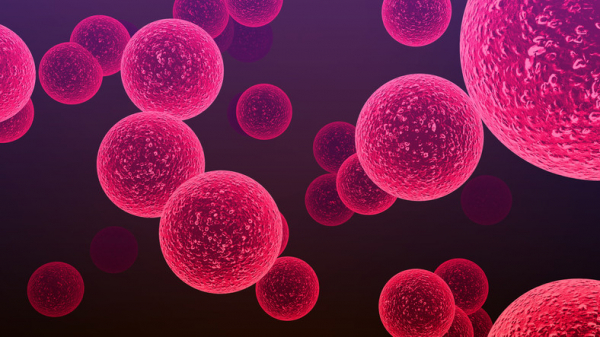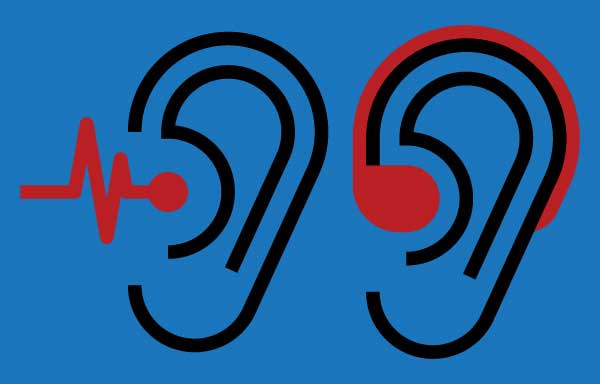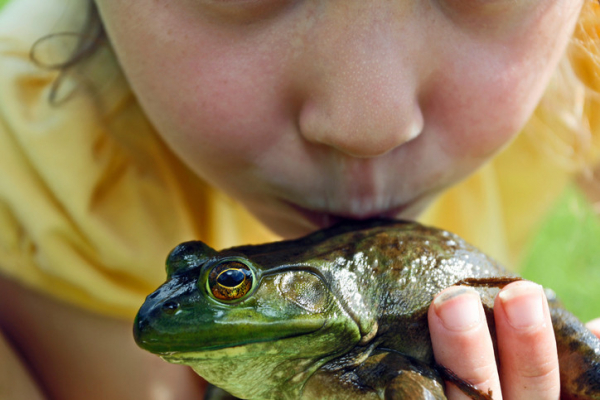
What to do when driving skills decline

Part 2 of a two-part series on making decisions about driving as we age. Read Part 1 here.
It’s a simple but unfortunate fact: driving skills can wane over time.
Eventually, driving can become unsafe for an older driver, their passengers, and others on the road. If you notice a decline in driving abilities in a loved one, or in yourself, what’s the best way to handle this?
If you’re an older driver: Create an action plan
If you’re an older driver, don’t wait for a near-miss or an accident to think about the next steps. Planning ahead can help you tackle fixable issues, make necessary transitions easier, and avoid harming yourself or someone else.
Here are six measures you can take right now:
Have a frank conversation with a trusted friend or family member. After driving with them as a passenger, ask whether they are worried about your driving. Don’t disregard their comments, even if they share things you don’t want to hear.
See your doctor and talk about your driving. Is it harder to see at night? Are you finding you’re slower to react? Ask your doctor about medical care that can help, such as cataract surgery, treatment for sleep apnea, or adjustments to medications that might affect driving.
Take a self-evaluation test or an on-road test.AAA has tools to help with this, or you can check with your local department of motor vehicles for options. Even if you feel it’s unnecessary, a driving test can be reassuring to your loved ones that you’re still safe behind the wheel.
Take driving classes. In many places, there are general refresher courses, courses for defensive driving, and even simulators that don’t require actual road tests. AAA and AARP offer online courses that can help you improve your driving. (And by the way, these courses may also reduce the cost of your auto insurance!)
Consider alternatives to how you drive. Stick to roads that are close to home or to routes that have traffic lights (rather than having to decide when traffic is clear enough to turn). Consider giving up night driving if that is particularly difficult.
Make adjustments to your car that can help. Examples include using a steering wheel cover to improve your grip or changing the position of your seat to improve your view of the road. Check out the CarFit program that aims to optimize the “fit” of a driver in their car.
In addition, explore options that don’t require you to drive as often or at all:
- grocery delivery
- public or senior transportation (if offered or available where you live)
- carpooling with friends or family
- ride-hailing services or taxis
- hiring a driver.
Cost and availability may be barriers, but it’s worth looking into these options.
If you’re a concerned family member or friend: Start a conversation
With so much at stake, the language you use matters. So, it’s a good idea to think ahead about how to talk about these challenges.
Put safety and solutions first. It’s best not to lead by criticizing driving skills. Instead, talk about driving with safety and solutions in mind, such as the options described above.
Choose your words carefully. It helps to avoid threats or confrontational language: rather than saying “Your driving is terrible so I’ve taken away your keys,” focus on safety and support:
- Let’s talk about how I can help so you don’t have to drive. I can drive you to get your groceries on Sundays and we can make a day of it!
- How do you think those dents got on your car? Are you having trouble with your vision?
- We’d all feel terrible if you had an accident and got hurt or hurt someone else.
Offer to go for a ride together and then to talk about specific concerns, such as staying in the proper lane, changing lanes, making left-hand turns, speed, or sudden braking. Encourage consideration of a self-evaluation or on-road test, and driving classes to help polish skills.
Use examples from familiar experiences. It can be helpful to remind your loved one how his or her parents or grandparents had to cut back on their driving, or how an older neighbor was an unsafe driver.
Focus on the risks posed by other drivers. Aggressive or unpredictable drivers can pose more danger to older drivers with slower reaction times.
How else can families or friends of older drivers be helpful?
- Consider whether to contact their doctor. Ask their doctor if it’s possible to talk with your loved one or friend about their driving. State regulations vary on mandatory reporting of conditions that affect a patient’s ability to drive. Be aware that some doctors may be reluctant to report their patients to their registry of motor vehicles, due to concerns about patient privacy or jeopardizing the patient-doctor relationship.
- Look into rules and regulations around older drivers where your loved one lives. Illinois is currently the only state that requires a road test for older drivers. But many states require vision tests and in-person renewal with increasing frequency for older drivers.
- Consider reporting an unsafe driver to traffic safety authorities. This may feel like a betrayal, but if other efforts have failed this option might be better than waiting until there’s a serious accident.
The bottom line
In the future, safe, driverless cars may be a solution to the challenge of waning driving skills among older drivers. But we’re not there yet.
Right now, we should all acknowledge that it’s not easy to address concerns about impaired older drivers. My best advice is that older drivers and their loved ones try to talk about ways to remain a safe driver and put a plan in place. Ideally, we all would start the conversation well before any driving problems are evident.
And it may take more than one conversation. Many more. But let’s face it: sooner or later, most drivers will have to stop driving. For some older drivers, that time may be now. For the rest of us, recognizing this eventuality could help when our time comes.
About the Author

Robert H. Shmerling, MD, Senior Faculty Editor, Harvard Health Publishing; Editorial Advisory Board Member, Harvard Health Publishing
Dr. Robert H. Shmerling is the former clinical chief of the division of rheumatology at Beth Israel Deaconess Medical Center (BIDMC), and is a current member of the corresponding faculty in medicine at Harvard Medical School. … See Full Bio View all posts by Robert H. Shmerling, MD

Cellulitis: How long does it take to heal on legs?

Cellulitis is an infection of the deep layers of the skin. It develops when bacteria enter through a cut, bite, or wound — including tiny breaks in cracked, dry skin. Common skin-dwelling bacteria, Staphylococcus or Streptococcus, are the usual culprits. Although cellulitis can occur anywhere on the body, the most common location is the lower leg.
Dr. Arash Mostaghimi, a dermatologist at Brigham and Women’s Hospital and associate professor of medicine at Harvard Medical School, weighs in on new research that explores important questions about how long it takes to fully heal.
What are the symptoms of cellulitis?
The body’s natural immune response to this bacterial invasion triggers a painful rash that appears red on lighter skin and dark purple on darker skin. The affected area also may be swollen and feel warm.
How is cellulitis treated?
The typical treatment is five to 10 days of antibiotic pills. More serious cases may require intravenous antibiotics.
How quickly can antibiotics help cellulitis resolve?
After starting antibiotic treatment, people usually notice improvement within a few days. However, the area may remain swollen, warm, and painful even after 10 days.
Does that mean the antibiotic treatment was ineffective? Not necessarily, according to a recent study of people with cellulitis in the lower leg that described the natural history of the healing stages following antibiotics.
“The healing process has two parts, which is why a full recovery takes longer than you might think,” says Dr. Mostaghimi.
First, the antibiotics and your white blood cells work together to kill the bacteria. But your body’s immune response against the bacteria may take a while to shut down. As a result, this second stage of the healing process may include some residual symptoms, he explains.
What did the study find?
The study included 247 people with mild to moderate cellulitis of the lower leg who received antibiotics for seven to 10 days. By day 10:
- Their swelling had lessened by 50%, and the size of the affected area had shrunk by about 55%.
- A blood marker of inflammation, C-reactive protein, dropped during treatment and reached near-normal levels in all the participants.
- Still, more than half continued to report discomfort in the affected leg, with 14% ranking their pain as 5 or greater on a scale of 1 to 10.
This pattern of discomfort isn’t unusual, especially with leg infections, says Dr. Mostaghimi. As people are recovering from leg cellulitis, they’re often advised to elevate the leg, which helps to ease the swelling. (Putting a warm, moist washcloth on the area may also help.)
But after they feel better and start walking more, fluid shifts back down into the legs. So it’s not surprising that the area might feel a little swollen and uncomfortable again once they’re back on their feet, he says.
Who is at greatest risk for cellulitis?
Remember, cellulitis typically occurs when bacteria normally present on our skin manage to breach that shield to enter the body.
Some people who develop cellulitis have no obvious injury or skin damage to explain the infection, which can occur in people who are generally healthy. However, people with certain health problems are more prone to cellulitis. This includes people who are overweight or have diabetes, a weakened immune system, poor circulation, or chronic edema (swollen limbs).
Additionally, skin conditions such as eczema and athlete’s foot can create small cracks in the skin that make it easier for bacteria to penetrate deeper into the skin, Dr. Mostaghimi says. Scratching a bug bite until it bleeds is another possible entry point for bacteria.
What happens if cellulitis goes untreated?
Untreated cellulitis can be very serious. The rash may spread, be surrounded with blisters, and become increasingly painful. Nearby lymph nodes may become tender and swollen, followed by fever and chills. Seek medical care right away if you experience these symptoms.
The bottom line
“It’s important for people with leg cellulitis to realize that it may take a bit longer after finishing your antibiotics for all of your symptoms to completely resolve,” says Dr. Mostaghimi. You’ll probably start to feel better within a few days, but always finish all the pills in your antibiotic prescription. However, having residual symptoms once you’re done does not mean you need another course of antibiotics or a different antibiotic, he says.
About the Author

Julie Corliss, Executive Editor, Harvard Heart Letter
Julie Corliss is the executive editor of the Harvard Heart Letter. Before working at Harvard, she was a medical writer and editor at HealthNews, a consumer newsletter affiliated with The New England Journal of Medicine. She … See Full Bio View all posts by Julie Corliss
About the Reviewer

Howard E. LeWine, MD, Chief Medical Editor, Harvard Health Publishing
Dr. Howard LeWine is a practicing internist at Brigham and Women’s Hospital in Boston, Chief Medical Editor at Harvard Health Publishing, and editor in chief of Harvard Men’s Health Watch. See Full Bio View all posts by Howard E. LeWine, MD

Chronic fatigue syndrome is rising

Bone-deep exhaustion not eased by rest, lasting six months or more. Brain fog. Pain. These and other symptoms are hallmarks of myalgic encephalitis/chronic fatigue syndrome (ME/CFS). People who have it find their symptoms often spike after minor daily tasks, work, and other exertions.
A new CDC report estimates 3.3 million Americans — including many with long COVID — may have this tricky-to-diagnose condition. Below is one such story drawn from the Health Story Collaborative series on chronic illness, “Making the Invisible Visible,” which we’d like to share with our readers.
Telling authentic stories about illness
Millions of Americans live with chronic illness. But how authentically do we tell — or share — those stories? Chronic illness doesn’t inevitably strengthen us or lead to transformation, as popular cultural narratives often stress. It can feed the sense of being alone in a world of the well. And a long-term illness may not be diagnosed for years or unfold neatly from one clear point to the next.
As Dr. Annie Brewster, the founder and executive director of Health Story Collaborative (HSC), notes, “we can’t control what happens to us, but we can control the meaning we make.” Jonathan Adler, PhD, is chief academic officer of HSC and a psychologist who focuses on the healing power of narrative. Working together, the two have helped people dig deep to shape very personal stories and share truths about illness through audio, video, and art.
Sharing a story of life with chronic fatigue syndrome
Below we share a few moments from the experiences of Lili, a basketball-loving, hard-charging college student juggling theater roles, sports, and a heavy course load with apparent ease until crippling fatigue descended. (Edited and condensed from video.)
“I could hardly wake up to my alarm and drag my body along with me to classes and rehearsals,” Lili recalls. A treatable case of hypothyroidism — which does indeed cause fatigue — was merely round one. Stimulants prescribed by a therapist helped, but when graduation passed and she stopped taking them, bone-deep exhaustion flooded back, leaving her largely bedridden and without a diagnosis for endless months.
“My bones weighed 10 pounds. Thoughts flitted in and out but never stuck,” Lili says. Eventually a specialist in infectious diseases helped her put a name to the health issues so radically affecting her life. “With crippling fatigue, severe brain fog, and post-exertional malaise — crashes caused by activities such as talking, showering, eating, walking, texting — he told me that I qualified for a diagnosis of ME/CFS: myalgic encephalitis, better known as chronic fatigue syndrome.”
The losses of chronic illness are many. “When my body was taken away from me, I lost a huge part of my identity. In many ways being athletic and strong is a ginormous part of who I am — or who I was,” Lili says. “My mind no longer works the way it used to, like I got a critical software update but it didn’t quite download, so now I’m just stuck on the blue screen with the cursor blinking away.”
Lili’s path (or paths) forward isn’t yet clear. When you grapple daily with a chronic illness, recovery isn’t the golden arc shown in movies or popular in print. “Perhaps one day all of this will consolidate into one clear picture, but I think it will continue in this way — a messy, gappy, one-day-at-a-time kind of way,” she says. “There’s no resolution to my story. It’s still being written.”
View the full story Lili shared with the Health Story Collaborative (video sponsored by Harvard Pilgrim Health Care, Point 32 Health Foundation, and Tufts Health Plan)
About the Author

Francesca Coltrera, Editor, Harvard Health Blog
Francesca Coltrera is editor of the Harvard Health Blog, and a senior content writer and editor for Harvard Health Publishing. She is an award-winning medical writer and co-author of Living Through Breast Cancer and The Breast … See Full Bio View all posts by Francesca Coltrera
About the Reviewer

Howard E. LeWine, MD, Chief Medical Editor, Harvard Health Publishing
Dr. Howard LeWine is a practicing internist at Brigham and Women’s Hospital in Boston, Chief Medical Editor at Harvard Health Publishing, and editor in chief of Harvard Men’s Health Watch. See Full Bio View all posts by Howard E. LeWine, MD

Seeking fitspiration on social media?

Now that it’s 2024, perhaps you’ve thought about taking up a new exercise program, eating better, or some other ways to improve your health. That’s great! Or, as my grandfather would say, “there’s nothing wrong with that” — his highest possible praise.
In fact, few medical treatments rival the massive health benefits of regular exercise. But how do you decide which type of exercise is best for you? Well, you could get advice from your doctor or a personal trainer. You might read books on fitness or sample exercise classes. It turns out, though, that many people are simply scrolling through tons of engaging “fitspirational” posts on social media. If you do that regularly — more often, say, than taking a brisk walk — a new study suggests you should rethink that strategy.
What exactly is fitspiration?
Fitspiration describes social media posts intended to inspire physical fitness and promote health. You can find fitspirational posts on TikTok, Instagram, Facebook, and other popular social media sites. Typically, they feature glossy photos and videos packaged with exercise and diet recommendations, accompanied by encouraging messages and quotes.
On Instagram alone, a search for #fitspiration (or related hashtags such as #fitspo) currently lists nearly 100 million posts. Most of them display images of attractive, lean, and fit women as they exercise and talk about fitness and optimizing health.
What’s the problem with fitspiration?
The potential benefits of a pro-fitness message reaching millions of people are obvious. But the message has to be credible and valid. And, importantly, posts should not convey inaccurate, unhelpful, or even harmful information. That’s where the problems start.
Clearly, social media posts about fitness can have positive effects, according to some research, especially when focused on realistic exercise goals rather than appearance. However, fitspirational posts may have downsides for viewers, including
- increased body dissatisfaction
- negative mood
- decreased perception of attractiveness
- embracing thinness as the ideal
- a limited range of diverse body shapes and types, suggesting that beauty is defined by being ultra-fit and thin
- a focus on appearance rather than function and capability.
A study of #fitspiration: Do these social media posts actually inspire fitness?
A recent study assesses the quality of content with fitspiration hashtags posted by Instagram influencers. The results were disappointing, though not surprising.
The authors identified 100 Instagram accounts of the most popular fitspiration influencers. Each of these accounts’ last 15 posts was analyzed. Posts were not considered credible if they
- displayed nudity or revealing clothing, such as wearing a bikini at the gym
- sexualized the person exercising, such as focusing on a woman’s breasts
- included images of extreme body types, such as people who are severely underweight or extremely muscular
- conveyed messages encouraging thinness or other negative messages rather than emphasizing health
- contained fitness information in three or fewer posts out of 15.
Here’s what the researchers found:
- 26% portrayed sexualized images
- 22% posted nudity or images of people exercising in revealing clothing not appropriate for exercise
- 15% featured people with extreme body types
- 41% posted fitness-related content in three or fewer posts.
A quarter of these accounts failed the credibility test on more than one of these criteria. Even among the accounts considered credible, only half were posted by people with credentials related to fitness or health, such as certification as a physical therapist or personal trainer.
While this study did not examine whether the posts had an actual impact on fitness outcomes, the findings raise questions about the quality of fitspiration content.
What does this mean for you?
If you’re looking for fitness-related health content, seek out the best information you can. Be skeptical of any sources lacking credentials related to fitness. Be especially wary of posts selling a product or service.
The authors of this study established certain criteria for fitness-related content they reviewed. You could apply this to posts you see online.
The bottom line
It should be no surprise to find that when it comes to health information, social media may not always be the best place to start.
While taking steps to improve your health is commendable — truly, there’s nothing wrong with that! — getting motivated to be more physically active is just a start. Information you rely on to improve your physical fitness shouldn’t just look appealing. It should be well-vetted for safety and backed by solid evidence that it can actually improve your health.
Here’s to better fitness in the New Year!
About the Author

Robert H. Shmerling, MD, Senior Faculty Editor, Harvard Health Publishing; Editorial Advisory Board Member, Harvard Health Publishing
Dr. Robert H. Shmerling is the former clinical chief of the division of rheumatology at Beth Israel Deaconess Medical Center (BIDMC), and is a current member of the corresponding faculty in medicine at Harvard Medical School. … See Full Bio View all posts by Robert H. Shmerling, MD

Are poinsettias, mistletoe, or holly plants dangerous?

Last winter, my wife shooed the dog and visiting toddlers away from our poinsettia plants, saying “they’re poisonous, you know.”
I did not know. But it turns out that the belief that poinsettias are deadly is widespread. The same could be said for mistletoe and holly. But are their reputations for danger well-deserved? Since these plants are especially popular to brighten up homes or give as gifts during the holidays, I decided to look into it.
The risks of poinsettia
Could a plant so common and so well-liked in the winter holidays also be so dangerous? If it is dangerous, what problems does it cause? Must it be eaten to cause problems, or is it harmful to just be nearby? And if it’s not dangerous, why does the myth live on?
The answers to these questions are not easy to find. In fact, the bad reputation may have started in 1919, when an army officer’s child reportedly died after eating part of a poinsettia plant. It is unclear if the plant was responsible, though: many other reports describe mild symptoms, such as nausea or vomiting, but no deaths.
Decades ago, a study in the American Journal of Emergency Medicineanalyzed nearly 23,000 cases of people eating poinsettia and found
- no fatalities
- nearly all cases (96%) required no treatment outside the home
- most cases (92%) developed no symptoms at all.
According to one estimate, a 50-pound child would have to eat more than 500 poinsettia leaves to approach a dose that could cause trouble. Similarly, pets may develop gastrointestinal symptoms after eating poinsettia, but these plants pose no major threat to animals.
The risks of mistletoe
The story is much the same for mistletoe. It’s not particularly dangerous, but may cause an upset stomach if eaten. In fact, mistletoe has been used for centuries as a remedy for arthritis, high blood pressure, infertility, and headache. The evidence isn’t high-quality for any of these uses, though.
Interest also centers on this plant’s potential as an anticancer treatment. Some extracts of mistletoe contain chemicals shown to kill cancer cells in the laboratory and to stimulate human immune cells. For example, a substance called alkaloids has similar properties as certain chemotherapy drugs used in the past to fight leukemia and other forms of cancer. However, a two-part 2019 review found that adding mistletoe extracts to conventional cancer treatments did not improve survival or quality of life.
No one suggests it’s a good idea to eat this plant, accidentally or otherwise. But eating one to three berries or one or two leaves is unlikely to cause serious illness, according to the authors of a 1986 review of multiple studies. And no significant symptoms or deaths were described in one report of more than 300 cases of eating mistletoe. However, some sources warn that serious problems or even death may occur if enough is ingested. The specific dose required to cause death is unknown but, fortunately, it appears to be so high that consuming enough to be lethal is extremely rare.
The risks of holly
This plant can be dangerous to people and pets. The berries of holly plants are poisonous. If eaten, they may cause crampy abdominal pain, drowsiness, vomiting, and diarrhea. While no one would recommend eating holly, it is unlikely to cause death. And for at least one type of holly, knowing the Latin name would be enough to discourage ingestion: the yaupon holly is also called Ilex vomitoria.
The bottom line
No one should eat poinsettias, mistletoe, and holly, but if small amounts are consumed, they are unlikely to cause serious illness. It seems to me that the dangers of these plants appear to be vastly overestimated.
Perhaps the most dangerous thing about mistletoe and poinsettias is the choking hazard the berries pose for young kids, although that risk is not unique to plants: any small object poses similar risks. Try to keep holiday plants out of the reach of small children and pets. And keep in mind that berries may fall from these plants and wind up on the floor.
If a child or pet eats leaves or berries from these holiday plants, or any other plants, check in with poison control, your pediatrician, or your veterinarian. But unless a particularly large “dose” is consumed, don’t be surprised if the recommendation is to simply watch and wait.
Still concerned even if you know the risks are low? You can always regift holiday plants you receive to friends with no children or pets, or find other ways to decorate your home for the holidays.
Follow me on Twitter @RobShmerling
About the Author

Robert H. Shmerling, MD, Senior Faculty Editor, Harvard Health Publishing; Editorial Advisory Board Member, Harvard Health Publishing
Dr. Robert H. Shmerling is the former clinical chief of the division of rheumatology at Beth Israel Deaconess Medical Center (BIDMC), and is a current member of the corresponding faculty in medicine at Harvard Medical School. … See Full Bio View all posts by Robert H. Shmerling, MD

Want to reduce your risk of dementia? Get your hearing checked today

Are you having a little trouble hearing conversations? If so, you’re not alone. An estimated 23% of Americans ages 12 and older have hearing loss. Although most of those people have mild hearing loss, for people ages 80 years and older, it’s more common for hearing loss to be moderate to severe than mild.
But not only is moderate to severe hearing loss disruptive to one’s life, it also makes you more likely to develop dementia. A new study helps explain why — and what you can do about it.
What did the new study look at and find?
A study published in JAMA focused on a sample of adults in the United States from the National Health and Aging Trends Study, which follows Medicare beneficiaries. The participants sampled were 70 or older.
The researchers found that about 33% of participants had normal hearing, 37% had mild hearing loss, and 30% had moderate to severe hearing loss. Dementia occurred least often among those with normal hearing (6%), more often among those with mild hearing loss (9%), and most often among those with moderate to severe hearing loss (17%). That’s a large increase in risk, particularly for those whose hearing loss is moderate to severe.
What else to know about this study
The study sample was selected to make it possible to analyze subgroups by age and apply findings to a diverse population. The sample included additional participants ages 90 years and older, and additional participants who identified as Black. Of the 2,413 total participants, 53% were ages 80 years and older, 56% were female, 19% were non-Hispanic Black, 4.5% were Hispanic, and 74% were non-Hispanic white.
Also, unlike previous research, this study looked objectively at hearing loss and dementia. Prior research had shown that hearing loss is thought to account for about 8% of all dementia cases worldwide. Exactly why the connection exists is not known.
It’s important to note that most large studies that found this link were based on questionnaires that people fill out. In other words, no one actually measured the hearing of those participating in the study to make sure that they had hearing loss — or that their hearing was really normal.
In this new study, however, the investigative team used an electronic tablet-based audiometer to evaluate participants’ hearing for four pure tone frequencies that are most important for understanding speech. So, for the first time in a large study, there was objective measurement of hearing loss.
How do hearing aids reduce the risk of dementia?
If you have hearing loss, does that mean you’re doomed to develop dementia? Not at all. This study found that those with moderate to severe hearing loss could significantly reduce their risk of dementia simply by using hearing aids.
This research helps us understand why hearing loss causes dementia. Here’s the connection:
There is increasing evidence that the more the brain is stimulated, the less likely it is that dementia will develop. When there is hearing loss, auditory stimulation is reduced. This, by itself, likely increases dementia risk. But even more important is that when an individual suffers from moderate to severe hearing loss, they are less likely to participate in social activities. Perhaps they are embarrassed about their hearing loss. Or they may simply find it unrewarding to attend a social event when they cannot hear what is going on.
It turns out that social activities are one of the best ways to stimulate the brain, as there is evidence that our brains evolved to facilitate social behavior. Given all this information, you won’t be surprised to learn that reduced social activity has been linked to cognitive decline. Thus, this new study provides additional evidence that the reason hearing loss increases the risk of dementia is because hearing loss reduces brain stimulation — both directly and through reduced social interaction.
What to do if you have hearing loss
Don’t let hearing loss raise your risk of dementia.
- Keep your ears clean. (But remember, never put anything in your ears smaller than your elbow. Ask your doctor if you’re not sure how to clean your ears.)
- If you can’t hear and you don’t have hearing aids, get them. Hearing aids now available over the counter can help many people with mild to moderate hearing loss.
- If you have hearing aids, wear them.
- If your hearing aids aren’t working, get them fixed.
- Don’t be passive — ramp up your social life and other activities.
All these things will help to reduce your risk of dementia. And you might just find that, despite some hearing loss, you’re enjoying life more.
About the Author

Andrew E. Budson, MD, Contributor; Editorial Advisory Board Member, Harvard Health Publishing
Dr. Andrew E. Budson is chief of cognitive & behavioral neurology at the Veterans Affairs Boston Healthcare System, lecturer in neurology at Harvard Medical School, and chair of the Science of Learning Innovation Group at the … See Full Bio View all posts by Andrew E. Budson, MD

Small pets are delightful, but some carry dangerous bacteria

Small animals like turtles, iguanas, and frogs are often chosen as first-time pets for children because they are easy to interact with and low maintenance for busy households. While they can be fun, it may be best to avoid them.
The reason? “Reptiles and amphibians can carry germs that make people sick, the most common of which is the Salmonella bacteria,” says Dr. Elizabeth Hohmann, an infectious disease expert with Harvard-affiliated Massachusetts General Hospital. “These animals live in warm and wet environments where Salmonella thrives.”
Outbreaks of illness across the US
Reptiles and amphibians often carry Salmonella in their digestive tracts, although the bacteria doesn’t affect them. The risk of illness from these pets became so severe this year that the CDC warned about adopting tiny pet turtles after reported outbreaks of Salmonella illnesses and hospitalizations in 24 states. (Other small pets such as mice or hamsters, and farm animals like chickens, may also carry and spread the bacteria.)
How is the bacteria transferred from pets to children and adults?
People become exposed to Salmonella through physical contact with the animals, their droppings, food, items like toys or food dishes, and habitats such as cages, tanks, aquariums, and water.
“They get the bacteria on their hands and then inadvertently touch their mouths or nose,” says Dr. Hohmann. This is especially likely in younger children.
Once exposed to the bacteria, people can get an infection called salmonellosis.
Who is more likely to get sick?
Anyone can get salmonellosis, but children younger than age 5, adults 65 and older, and people with chronic conditions are at higher risk for severe illness and even hospitalization.
“Kids that are very young don’t always follow proper personal hygiene or understand safety protocol when handling these animals,” says Dr. Hohmann. “Older adults and people with chronic conditions like diabetes can have weakened immune systems that make them more susceptible to illnesses.” In the most serious cases, the bacteria can reach the bloodstream and from there infect other places within the body.
What are the symptoms of this infection?
The hallmarks are diarrhea, fever, and abdominal cramps. These symptoms usually appear within six hours to four days after infection and last about four to seven days.
Call your pediatrician or primary care team for advice if you have a pet that potentially carries Salmonella.
When should you seek immediate medical care?
Seek medical care immediately if you or your child have any of these severe symptoms:
- diarrhea and a fever higher than 102° F
- diarrhea for more than three days that is not improving
- bloody diarrhea
- so much vomiting that you cannot keep liquids down
- signs of dehydration such as not urinating much, dry mouth and throat, or feeling dizzy when standing up.
What if you already have a pet turtle?
If you already have a pet turtle or similar high-risk pet, make sure everyone follows these safety steps from the CDC. Children may need frequent reminders about washing hands and playing safely.
Wash hands. Always wash hands for at least 20 seconds with plenty of soap and warm water right after touching or feeding your pet, and after handling or cleaning the area where it lives and roams. “Adults should make sure to teach young children how to wash their hands properly,” says Dr. Hohmann.
Play safely. Don’t kiss or snuggle the pet, and don’t eat or drink around it. Keep it out of the kitchen and other areas where you eat, store, or prepare food.
Properly clean. Use cleaning materials like a wash tub, sponge, and scrub that are reserved only for your pet. Always clean cages, tanks, and other pet items outdoors. Avoid using a kitchen sink, as this can increase the risk of spreading germs to your food.
But perhaps the best safety advice is to simply avoid these animals as pets — or at least wait until your kids are much older, says Dr. Hohmann. “It’s probably safer to stick with dogs and cats.”
About the Author

Matthew Solan, Executive Editor, Harvard Men's Health Watch
Matthew Solan is the executive editor of Harvard Men’s Health Watch. He previously served as executive editor for UCLA Health’s Healthy Years and as a contributor to Duke Medicine’s Health News and Weill Cornell Medical College’s … See Full Bio View all posts by Matthew Solan
About the Reviewer

Howard E. LeWine, MD, Chief Medical Editor, Harvard Health Publishing
Dr. Howard LeWine is a practicing internist at Brigham and Women’s Hospital in Boston, Chief Medical Editor at Harvard Health Publishing, and editor in chief of Harvard Men’s Health Watch. See Full Bio View all posts by Howard E. LeWine, MD

Do toddler formulas deliver on nutrition claims?

Once babies are a year old, those who have been drinking infant formula don’t need it anymore. By that age, they can and should get most of their nutritional needs met by solid foods. Drinking cow’s milk, or a fortified plant milk such as soy milk, is perfectly fine. And honestly, they don’t even need that much of it.
A 2023 report from the American Academy of Pediatrics (AAP) looked closely at what toddlers actually need for healthy growth and development — and toddler milks didn’t make the cut. Here are a few key takeaways for parents.
Is toddler formula more nutritious than milk?
No. But for some parents, it feels odd and uncomfortable to stop formula and give cow’s milk. They feel like formula is more nutritious and maybe even more easily digested. That may not be surprising: a lot of marketing money has encouraged people to think this way.
So it’s understandable that some parents turn to formulas marketed for toddlers. It’s especially understandable given the claims that formula companies make about the nutritional advantages of toddler formula. You may have seen — or bought — these products marketed purely as “follow-up formulas,” “transition formulas,” or “growing-up milks.” These formulas do not have a medical purpose. They simply help companies keep the customers they would otherwise lose once babies turn a year old.
Not only are toddler formulas unnecessary, some of them are actually worse than cow’s milk. That’s the main message shared by the AAP, which hopes to help parents understand what older infants and toddlers actually need — and see through the marketing claims.
Do some toddlers need specialized formulas?
Yes. Just to be clear, I am not talking about specialized formulas for children over 12 months who have digestive, metabolic, or other medical problems.
Are toddler formulas regulated in any way?
No. Because infant formulas must meet all the nutritional requirements of babies less than 12 months of age, they are regulated by the FDA. The FDA has requirements about what they must and must not contain, and it makes sure that the facilities where infant formulas are made are regularly inspected.
This is not true of toddler formulas. They are not regulated, and not required to prove any of the claims they make about their nutritional benefits.
What might make a toddler formula unhealthy?
Given the lack of regulation, it’s not surprising that there is wide variation in the composition of toddler formulas. But what is particularly worrisome, says the AAP, is that some of these products are actually unhealthy. They may have too little or too much protein, or have added sweeteners. These added sweeteners can build a child’s “sweet tooth” and set them on the path to obesity.
Additionally, toddler formulas are more expensive than cow’s milk, creating a financial burden for families — one that is definitely not worth it.
Is your toddler’s diet healthy?
Instead of reaching for a toddler formula, try to take a broader look at your child’s diet. Toddlers should eat from the same healthy food groups we all need. This includes
- fruits and vegetables
- whole grains
- protein (such as meat, fish, beans, and nut butters)
- dairy or dairy substitutes fortified with calcium and vitamin D.
Limit added sugars, and after age 2 try to limit less-healthy fats in the child’s diet as well. The best way to build healthy lifetime habits is to start early, and this is particularly true of nutrition.
About the Author

Claire McCarthy, MD, Senior Faculty Editor, Harvard Health Publishing
Claire McCarthy, MD, is a primary care pediatrician at Boston Children’s Hospital, and an assistant professor of pediatrics at Harvard Medical School. In addition to being a senior faculty editor for Harvard Health Publishing, Dr. McCarthy … See Full Bio View all posts by Claire McCarthy, MD

What does a birth doula do?

Childbirth — painful, messy, unpredictable — has been part of humankind for time immemorial. And in the US, which has surprisingly high rates of avoidable complications and maternal deaths, more people seem to be seeking out doulas for additional care during pregnancy and birth, says Natalia Richey, interim chief midwife in the Department of Obstetrics and Gynecology at Massachusetts General Hospital.
Some research suggests that doula care may benefit both mother and baby. But what does a birth doula do? While neither a midwife nor a doctor, a professional doula can provide emotional and physical support to women during pregnancy and throughout the birthing process.
Here’s what to know if you’re considering doula care.
What’s the difference between doulas and midwives?
Midwives and doulas tend to have a few overlapping duties. But there’s a key difference: midwives provide medical care and doulas don’t.
- Midwives: Their primary responsibility is to maintain the physical health of a woman and her baby throughout childbirth. Certified nurse-midwives like Richey are also trained nurses, but most midwives have undergone some type of medical training. This may vary depending on state laws.
- Doulas: Unlike midwives, doulas don’t perform any medical tasks. Their main role is to help laboring women remain comfortable and calm using various methods, including suggesting comfort measures and optimal positions for labor and pushing.
“Many women hire doulas if they’re trying to have an unmedicated birth,” Richey says. “Doulas are really good at knowing what techniques — such as walking, showering, massage, or aromatherapy — can help a woman through the pain. It’s like having a coach.”
Are doulas trained or licensed?
Be aware that doula training varies widely. There are no formal rules requiring licensing or certification. Many doulas, however, seek certification from the more than 100 independent organizations that offer some type of doula training and credentials, according to the National Health Law Program.
Is doula care covered by insurance?
Private insurers often do not cover doula care, which can cost several thousand dollars when arranged for privately.
However, some employers — including Walmart — will help pay for doula care. And some hospital systems, particularly in low-income or medically underserved areas, have doula programs aimed at improving maternal care during and after pregnancy. Others may arrange doula support for people with limited resources who might otherwise be alone during the later stages of pregnancy and birth.
As of February 2023, 10 states and the District of Columbia provided Medicaid coverage for doula services. Other states are in the midst of implementing coverage. Most of the states that provide Medicaid coverage for doula care require doulas to be trained or certified by an approved organization.
Can working with a doula improve birth outcomes?
A 2023 analysis in the journal Cureus reviewed 16 individual studies done over 22 years. It found doula support was linked with better birth outcomes, such as fewer C-sections and premature deliveries, and shorter length of labor.
Additionally, the emotional support provided by doulas was associated with less anxiety and stress in birthing mothers. Among low-income women, doula support was shown to improve breastfeeding success.
“It’s impressive,” Richey says. “I think those improved outcomes are due to having an expert in the labor process who isn’t a medical person but is just there for you from moment to moment.”
How do people collaborate with doulas?
Agreements about care vary. Typically, doulas meet with women every few months through their pregnancy to discuss their goals for birth (such as skipping pain medication, for example), and to build rapport with both the expectant person and their spouse or partner.
Like obstetricians, doulas are on call 24/7 to support clients who have gone into labor or who have their labor induced. Doulas stay throughout the birth process.
“Having someone there who’s seen quite a few births, who can support and advocate for them, can be a huge comfort,” says Richey.
This may be especially important to women with limited resources, particularly those who might otherwise be alone during the later stages of pregnancy and birth. “Doulas remind women that they’re okay and can get through this process — all the things many of us take for granted,” Richey says.
How might a doula work with the OB/GYN team?
Usually, this is a seamless process, Richey says. If a hospital arranges for a woman’s doula, OB/GYN team members may meet the doula a couple of times before childbirth. Meanwhile, a doula who’s been hired privately will usually only meet the larger OB/GYN team when the woman arrives at the hospital to give birth.
When everyone sticks to their assigned roles, all goes smoothly. For a doula, that may mean suggesting nonpharmacological ways to ease pain and help labor progress. Boundaries are important, though, when medical intervention is needed.
“If the baby’s heart rate is down, for instance, the expertise needs to be left to the midwife or doctor,” Richey explains.
What questions should you ask if you’re interested in working with a doula?
Richey suggests starting by asking yourself:
- What are my hopes and goals for the childbirth process? Might a doula enhance my ability to achieve them?
- How do I envision my support team during delivery? Do I have a partner, a mom, or a friend I want there? Would a doula add to any support I already have?
- Do I have friends or family members who have used doulas in the past? What were their impressions of the experience? Can they recommend a doula?
If you contact a doula to explore your options, ask about:
- their training and certification
- how many births they’ve attended
- how they believe they can help you during your pregnancy and during labor
- how they will collaborate with your partner or spouse and the medical team
- whether they provide support after a birth — if so, what type of support and for how long?
“Take the time to meet with any doula you’re considering and make sure they’re a good fit,” Richey advises, “because this is someone who will be there during one of the most vulnerable times of your life. Having someone there who doesn’t make you feel safe and comfortable can affect birth in a major way.”
About the Author

Maureen Salamon, Executive Editor, Harvard Women's Health Watch
Maureen Salamon is executive editor of Harvard Women’s Health Watch. She began her career as a newspaper reporter and later covered health and medicine for a wide variety of websites, magazines, and hospitals. Her work has … See Full Bio View all posts by Maureen Salamon
About the Reviewer

Howard E. LeWine, MD, Chief Medical Editor, Harvard Health Publishing
Dr. Howard LeWine is a practicing internist at Brigham and Women’s Hospital in Boston, Chief Medical Editor at Harvard Health Publishing, and editor in chief of Harvard Men’s Health Watch. See Full Bio View all posts by Howard E. LeWine, MD

Holiday arguments brewing? Here’s how to defuse them

The holidays, as painted by idealists, are hardly the time for disagreements. They’re supposed to be filled with love, laughter, good cheer, and those tiny sparkly lights that make the mood feel festive. Unfortunately, joyous celebration often deteriorates into epic discord when family and friends gather during the season. But you don’t have to get drawn into arguments if you plan ahead and stay alert for potential triggers.
Why do we fight at the holidays?
In many ways, we are primed for holiday arguments. “It’s a stressful time. Buying gifts can lead to financial worries. The weather is colder. Days are darker. We’re trying to juggle work and get time off,” says Justin Gillis, a clinical therapist at Harvard-affiliated McLean Hospital. “The holidays can also elicit painful memories or make us face unfortunate realities in our lives, such as a lack of family or close support.”
As a result, we are often emotionally vulnerable during the holidays, Gillis says. It’s hard to manage intense feelings, express ourselves accurately, or be open and nonjudgmental.
“When we increase emotional arousal, it impacts our reasoning and subsequent behaviors. So we may be more defensive, or express ourselves in ways that result in conflict,” Gillis says.
Drinking alcohol at holiday gatherings can also fuel arguments, since alcohol lowers inhibitions and makes it harder to remain calm or maintain composure. In a 2021 survey from the American Addiction Centers, 57% of 3,400 respondents said they had at least one family member who becomes argumentative at holiday gatherings after imbibing too much.
Plan ahead to help defuse emotions and arguments
It’s challenging to control emotions in a heated moment. A bit of planning can help you avoid potential arguments or take appropriate action if angry words start flying. Here are some helpful tips.
Set a time limit. If you’re hosting the event, let your guests know in advance what time the festivities will end. If you’re attending the event, tell the host in advance when you’ll have to leave. “Stick to the plan, even if things are going well, so you can end on a high note,” Gillis says.
Ask for help. To help you rein in reactivity, ask someone you trust to give you a sign if a conversation appears to be risky or escalating. “They can chime in and ask you to do something, which is code for, ‘Back out or take a break.’ Doing that will ensure that you separate from the discussion,” Gillis says.
Schedule breaks. Think about when and how you’ll be able to take breaks during a gathering. This gives you an opportunity to check in with your emotions. “You might go into another room and take a moment to breathe deeply, volunteer to help set the table or clean up, or excuse yourself to make a phone call, even if nothing is wrong,” Gillis suggests. “These can be welcome distractions that limit the chance for conflict.”
Prepare words of deflection. If you know loved ones might ask questions that will lead to conflict, have a prepared answer and practice it. “Make a statement acknowledging the person’s feelings and letting them know it’s best for the topic to change,” Gillis says. He suggests using a version of the following statements.
- “I appreciate your thoughts, but let’s talk about something we agree on or share.”
- “I care about you, but I’m starting to feel sad and I don’t want to continue a negative conversation.”
- “I appreciate and respect your passion about this, but I don’t think I can talk about this anymore.”
How to de-escalate arguments
If you find that heated debates or arguments are brewing — or boiling over — you can still take a few steps to defuse the situation. Use the deflection statements you practiced, or excuse yourself from the conversation to go do another activity.
Other tips to keep in mind:
Don’t take the bait. Don’t answer nosy questions if you don’t want to. “Change the subject. Move the focus back onto the other person and ask how they’re doing,” Gillis says. And if someone asks a loaded question (such as, “I suppose you voted for that candidate?”), use humor if appropriate (“Let’s talk about the Bruins instead”) and change the subject or the activity.
Adjust your mindset. “We have to accept that there are perspectives we don’t like and that engaging in conflict isn’t likely to change anyone’s perspective,” Gillis says. “You can choose not to participate in an unhealthy conversation.”
Respond with kindness. “If someone is angry with you, that suggests they really care what you think. Remember that and try to maintain a compassionate stance and response,” Gillis advises.
Remember why you’re there. The goal of the gathering is celebrating, not solving painful or controversial issues. “It’s the holiday. It doesn’t have to be the day when everyone puts their cards on the table to work out problems,” Gillis says. “Make it festive and enjoyable so you can feel that you created a pleasant holiday memory together.”
About the Author

Heidi Godman, Executive Editor, Harvard Health Letter
Heidi Godman is the executive editor of the Harvard Health Letter. Before coming to the Health Letter, she was an award-winning television news anchor and medical reporter for 25 years. Heidi was named a journalism fellow … See Full Bio View all posts by Heidi Godman
About the Reviewer

Howard E. LeWine, MD, Chief Medical Editor, Harvard Health Publishing
Dr. Howard LeWine is a practicing internist at Brigham and Women’s Hospital in Boston, Chief Medical Editor at Harvard Health Publishing, and editor in chief of Harvard Men’s Health Watch. See Full Bio View all posts by Howard E. LeWine, MD